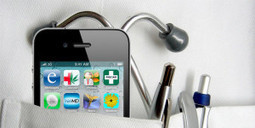Faces of Breast Cancer: A Global Community
20/10/2013Medication #Adherence: Taking Daily Steps for Healthier Outcomes
20/10/2013#Mobile and #SocialMarketing for #Medical Practices
One out of two U.S. adults have smartphones, yet every adult requires medical care. The rise in connectivity muddles up marketing for doctor’s offices, hospitals, and specialist care facilities, as patients are relying more on mobile information and services. Mobile marketing for medical practices is split between apps, browser ads, and building up an online presence, but where to begin with so many options?
Mobile Dot-Coms
A smartphone-friendly website doesn’t need all the bells and whistles of a typical browser site. Instead, site developers should focus more on streamlined simplicity and navigation. Mobile users “on the go” search out contact numbers, hours, locations, and other practical info directly from their phones through mobile browsers. Most users would prefer not to wade through cluttered designs, photos, and pages of information to find what they want. Here are a few designs to focus on:
- Speed: The best mobile sites load quickly on every platform. Users are more likely to back out and click on a competitor’s page if it takes too long.
- Navigation: Pinching, scrolling, zooming, and digging for links is time consuming. Smartphone users prefer a simple toolbar that will lead them directly to plain, easy to read information. This includes large, clickable links without popups or other Web obstacles in the way.
- Legibility: Keep it simple, neat, and clean. This means more than upping font sizes; a legible site is easy to read and follow. The flow is important.
- Content: Direct, easy to find content on mobile browsers is short. Maybe one image or graphic, but other than that only incorporate a paragraph or two of information. Have an “expand” link for longer articles.
- Contact Info: Push your contact information to the bottom of the page (phone, address, hours, etc.). With the Google Maps widget, users can click directly on the address and a link will open. “Click to Call” is another important feature to utilize.
- Social Connections: Make it easy for people to share, like, and follow your mobile site.
Social Exposure
Speaking of social media…almost half of all Facebook and Twitter traffic originates from mobile users. If you’re Tweeting a new blog you’ve published, for instance, one out of two smartphone users that click it will be linked to a (hopefully) mobile-friendly website. Mobile marketing for medical practices extends into the social realm more than most doctors would believe. Patients are always looking for interesting information about the medical field — why not from you? Keep your Twitter, Facebook, LinkedIn, Google+, and other platforms up and running to increase exposure and your online herd.
Another overlooked feature of social media are check-ins. Active Web-socialites love sharing where they are and who they are with; encourage check-ins via Facebook and Foursquare by offering specials, promotions, and other competitions. Any incentive helps, and checking in is a way for your patients to advertise for you.
Texting
Stay current on trends. Email is a common platform for sending patients reminders about schedule appointments and updates about your practice, but a personalized text can go a long way.
Micromarketing
One of the most powerful tools when mobile marketing for medical practices is, well, marketing. Social media and patient connections only go so far and mainly help retain existing patients and generate referrals. To get your name and practice out there, look into mobile advertising through apps, websites, and other platforms. There’s no need to spend tens of thousands of dollars on an app; instead, find an online ad agency that specializes in app and browser marketing.
Most of these systems are considered pay-per-click, meaning the advertiser only pays for the service once a smartphone user converts, or clicks, on the ad. These campaigns are highly efficient because mobile advertising is capable of targeting groups within a certain demographic or region. This location-based advertising is controllable by both the advertiser and the ad managers. If your practice specializes in pain management, for example, you can target groups that tend to visit your practice.
The basic idea behind mobile marketing is exposure and connectivity. You want to get your practice out there for exposure’s sake, while making it easier for potential patients to communicate back to you. Mobile marketing for medical practices is worth the investment, especially if your practice is facing some serious competition.
See on www.business2community.com




